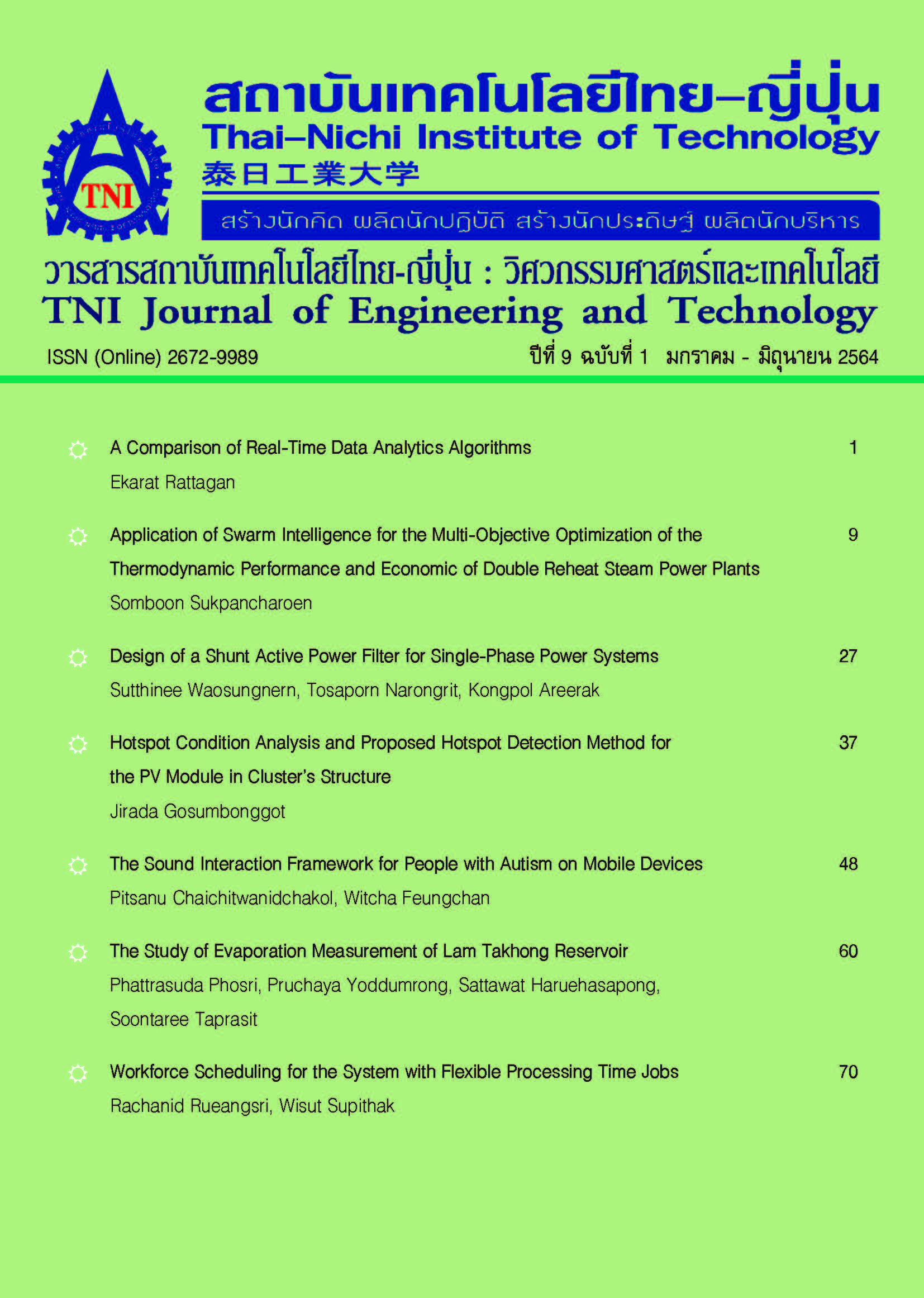The Sound Interaction Framework for People with Autism on Mobile Devices
Main Article Content
Abstract
Autism spectrum disorders (ASDs) is a group of complex neurodevelopmental disorders characterized by impairments in social interaction and communication. It results in language and speech disorders. Some autistic people may not speak at all, some imitate, and others speak their own language. This impedes the ability to communicate their own needs to others. Although cure for autism remains unknown, therapy can help develop skills and learning for them, leading to better well-being and quality of life. At Autism Research Center, Khon Kaen University, flash cards with pictures, books, and teaching slides have been used to improve speaking competency, but the children have not been satisfactorily interested in them. Today, communication disabilities are being widely treated by using mobile applications or games. Appropriate interaction is the key to the success of this therapy. Therefore, this paper presents a mobile sound interaction technique for people with autism. Developers could shorten their development time by following the proposed framework guideline to select the right interaction. To confirm the effectiveness, this research developed a game called “Run animal Run” by using the presented interaction framework and interactive multimedia, and then the game is employed with the volunteers at Autism Research Center, Khon Kaen University. The results showed that volunteers were able to interact with Run Animal Run game by using the designed interactions. This game help stimulating interest and improving their language skills.
Article Details
Article Accepting Policy
The editorial board of Thai-Nichi Institute of Technology is pleased to receive articles from lecturers and experts in the fields of engineering and technology written in Thai or English. The academic work submitted for publication must not be published in any other publication before and must not be under consideration of other journal submissions. Therefore, those interested in participating in the dissemination of work and knowledge can submit their article to the editorial board for further submission to the screening committee to consider publishing in the journal. The articles that can be published include solely research articles. Interested persons can prepare their articles by reviewing recommendations for article authors.
Copyright infringement is solely the responsibility of the author(s) of the article. Articles that have been published must be screened and reviewed for quality from qualified experts approved by the editorial board.
The text that appears within each article published in this research journal is a personal opinion of each author, nothing related to Thai-Nichi Institute of Technology, and other faculty members in the institution in any way. Responsibilities and accuracy for the content of each article are owned by each author. If there is any mistake, each author will be responsible for his/her own article(s).
The editorial board reserves the right not to bring any content, views or comments of articles in the Journal of Thai-Nichi Institute of Technology to publish before receiving permission from the authorized author(s) in writing. The published work is the copyright of the Journal of Thai-Nichi Institute of Technology.
References
M. Elsabbagh, G. Divan, Y. J. Koh, Y. S. Kim, S. Kauchali, C. Marcín, C. M. Nava, V. Patel, C. S. Paula, C. Wang, M. T. Yasamy, and E. Fombonne, “Global prevalence of autism and other pervasive developmental disorders,” Autism Research, vol. 5, no. 3, pp. 160–179, Jun. 2012.
Komchadluek. “Department of Mental Health reveals Thailand have three hundred thousand children with autism,” KOMCHADLUEK.net. https://www.komchadluek.net/news/regional/288899 (accessed Sep. 26, 2020).
A. S. Shminan, R. A. Adzani, S. Sharif, and N. K. Lee, “AutiPECS: Mobile based learning of picture exchange communication intervention for caregivers of autistic children,” in 2017 Int. Conf. Computer and Drone Applications (IConDA), Kuching, Malaysia, Nov. 2017, pp. 49–54.
F. Susanti, D. Junaedi, and V. Effendy, “Communication learning user interface model for children with autism with the goal-directed design method,” in 2019 7th Int. Conf. Information and Communication Technology (ICoICT), Kuala Lumpur, Malaysia, Jul. 2019, pp. 1–6.
I. Torii, K. Ohtani, T. Niwa, A. Yamamoto, and N. Ishii, “Augmentative and alternative communication with digital assistant for autistic children,” in 2012 IEEE Int. Conf. Emerging Signal Processing Applications, Las Vegas, NV, USA, Jan. 2012, pp. 71–74.
G. Hornero, D. Conde, M. Quílez, S. Domingo, M. P. Rodríguez, B. Romero, and O. Casas, “A wireless augmentative and alternative communication system for people with speech disabilities,” IEEE Access, vol. 3, pp. 1288–1297, 2015.
N. Heni and H. Hamam, “Design of emotional educational system mobile games for autistic children,” in 2016 2nd Int. Conf. Advanced Technologies for Signal and Image Processing (ATSIP), Monastir, Tunisia, Mar. 2016, pp. 631–637.
M. Santiputri, E. B. Sembiring, N. Z. Janah, and M. K. Mufida, “Abangmanis: Speech theraphy for autism monitoring mobile application,” in 2019 2nd Int. Conf. Applied Engineering (ICAE), Batam, Indonesia, Oct. 2019, pp. 1–6.
S. An, X. Feng, Y. Dai, H. Bo, X. Wang, M. Li, J. Z. Woo, X. Liang, C. Guo, and C. X. Liu, “Development and evaluation of a speech-generating AAC mobile app for minimally verbal children with autism spectrum disorder in Mainland China,” Molecular Autism, vol. 8, no. 1, pp. 1-12, 2017.
American Psychiatric Association, Diagnostic and statistical manual of mental disorders, 5th ed. Arlington, VA, USA: American Psychiatric Publishing, 2013.
U. Trangkasomba, Helping an autistic children, 2nd ed. Bangkok, Thailand: SUNTA PRESS (in Thai), 2007.
P. T. Torres, Learning excellence: A master course in learning how to learn, 2nd ed. Manila, Philippines: Training Systems Associates, Inc., 2002.


